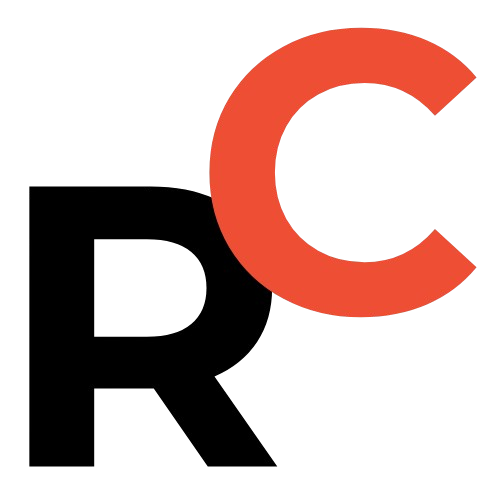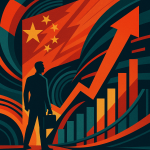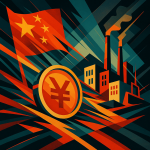Key Points
- The Chinese auto market price war has intensified again just before the May Day holiday, with at least nine automakers launching significant discounts.
- Brands like Dongfeng Nissan (Dongfeng Ri chan 东风日产) and Lynk & Co (Lingke 领克) are launching brand new models with final prices slashed by over ¥40,000 RMB (approx. $5,520 USD) compared to pre-sale announcements, leading to thousands of orders on launch nights.
- Beyond direct cuts, promotions include zero-interest financing (up to 6 years), increased trade-in subsidies (up to ¥40,000 RMB / approx. $5,520 USD), and cash discounts, with examples from Changan Mazda (Chang’an Madazida 长安马自达) and Avatr (Aweita 阿维塔).
- Despite the intense competition, some companies like SAIC Motor (Shangqi Jituan 上汽集团) saw positive results in Q1 2024, reporting 13.3% year-on-year sales growth and a 11.4% rise in net profit.
- Experts note this seasonal price activity is common but partly stimulated by government subsidies, describing the current skirmish as “relatively moderate” compared to the past two years.

The Chinese auto market price war is back with a vengeance, just in time for the May Day holiday.
It looked like things had cooled down, but nope.
In the last week of April alone, at least nine automakers rolled out significant discount policies.
They’re even launching brand-new cars at slashed prices, aiming to ride the expected holiday sales wave.

Find Top Talent on China's Leading Networks
- Post Across China's Job Sites from $299 / role
- Qualified Applicant Bundles
- One Central Candidate Hub
Your First Job Post Use Checkout Code 'Fresh20'

Price War Rekindled: Automakers Battle for May Day Sales
Companies are going all-in to capture consumer attention during the crucial “Golden Week” holiday.
“During the upcoming May Day Golden Week, in addition to our order and delivery centers, we have planned 40 local auto shows and 50 mall roadshows,” shared Wang Qian (王骞), GM of the New Energy Brand at Dongfeng Nissan (Dongfeng Ri chan 东风日产) Sales Company.
The hustle is real.
Wang Qian mentioned product specialists doing late-night test drives and sales teams closing deals deep into the night right after a recent launch.

ExpatInvest China
Grow Your RMB in China:
- Invest Your RMB Locally
- Buy & Sell Online in CN¥
- No Lock-In Periods
- English Service & Data
- Start with Only ¥1,000

Aggressive Launches: New Cars Debut with Deep Discounts
Launching new models directly into a price war? Bold strategy.
-
Dongfeng Nissan (Dongfeng Ri chan 东风日产) N7: Launched April 27th.
This mid-to-large sedan hit the market priced from ¥119,900 to ¥149,900 RMB (approx. $16,550 – $20,700 USD).
That’s a massive drop of over ¥40,000 RMB (approx. $5,520 USD) from its pre-sale range of ¥160,000 – ¥180,000 RMB (approx. $22,080 – $24,860 USD).
Result: 10,138 orders booked on launch night. -
Lynk & Co (Lingke 领克) 900: Launched the day after the N7.
This large SUV’s final MSRP was set at ¥309,900 – ¥416,900 RMB (approx. $42,800 – $57,580 USD), already lower than its pre-sale price.
But a limited-time promo slashed it further to ¥289,900 – ¥396,900 RMB (approx. $39,900 – $54,820 USD).
Again, a drop exceeding ¥40,000 RMB (approx. $5,520 USD) from pre-sale highs.
Result: Over 10,000 firm orders within the first hour. -
Firefly (Yinghuochong 萤火虫): The third brand under Nio (Weilai 蔚来).
Also launched officially with pricing ¥40,000 RMB (approx. $5,520 USD) below its pre-sale numbers.
The strategy seems to be creating “high perceived value” with initial higher prices, then locking in buyers with a much lower final price – playing on consumer emotions.

Resume Captain
Your AI Career Toolkit:
- AI Resume Optimization
- Custom Cover Letters
- LinkedIn Profile Boost
- Interview Question Prep
- Salary Negotiation Agent

Beyond Sticker Price: Creative Promotions Flood the Market
It’s not just about direct price cuts.
Automakers are getting creative with promotions:
- Time-limited benefits
- Zero-interest financing deals
- Increased trade-in subsidies
Here are some examples hitting the market:
-
Changan Mazda (Chang’an Madazida 长安马自达): Launched its “EZ-6 May Day Limited-Time Offer” on April 30th.
Post-subsidy, the range-extender starts at ¥99,800 RMB (approx. $13,780 USD), pure electric at ¥109,800 RMB (approx. $15,170 USD).
Includes 6 years of zero-interest financing and a free lifetime “zero fuel cost” benefit valued at ¥7,999 RMB (approx. $1,100 USD).
Valid until May 31st. -
Avatr (Aweita 阿维塔): Offering a ¥25,000 RMB (approx. $3,450 USD) cash discount on the Avatr 07 Pro+ (in stock).
Brings the starting price down to ¥194,900 RMB (approx. $26,920 USD).
Plus, an option for a 3-year interest-free plan (saving up to ¥18,900 RMB / approx. $2,610 USD).
Valid April 23rd to May 7th. - Chery (Qirui 奇瑞): Providing trade-in subsidies up to ¥40,000 RMB (approx. $5,520 USD) across multiple model series like Fengyun (风云) and Tiggo (瑞虎).
-
FAW Bestune (Yiqi Benteng 一汽奔腾): Offering factory trade-in subsidies up to ¥20,000 RMB (approx. $2,760 USD).
Combined with national subsidies, total savings could reach ¥40,000 RMB (approx. $5,520 USD).
Campaign runs May 1st to May 15th.

Price Cuts Paying Off? Q1 Performance Sees Uplift for Some
Does aggressively joining the price war actually work?
For some, it seems to be boosting the bottom line.
SAIC Motor (Shangqi Jituan 上汽集团) released its Q1 results on April 29th:
- Vehicle Sales: 945,000 units (up 13.3% year-on-year).
- Total Operating Revenue: ¥140.86 billion RMB (approx. $19.46 billion USD).
- Net Profit Attributable to Shareholders: ¥3.02 billion RMB (approx. $417 million USD) (up 11.4% year-on-year).
“Vehicle sales in the first quarter of 2024 showed steady improvement, with overall performance recovering,” SAIC Motor stated. They also highlighted stronger cash flow and healthier sales channels.

Market Insights: Data and Expert Takeaways on the Auto Price Skirmish
What does the data say?
The China Passenger Car Association (CPCA / Cheng Lian Fen Hui 乘联分会) projects average daily retail sales for the last two weeks of April to hit 85,300 vehicles.
That’s a 17.3% increase compared to last year, though slightly down (1.2%) from the previous month.
Cui Dongshu (崔东shu), Secretary-General of the CPCA, noted, “Many companies are launching manufacturer-level trade-in and scrapping subsidies to seize the opportunity presented by new trade-in policies, and the results have been quite effective.”
What about the “why”?
Gong Min (巩旻), Head of China Auto Industry Research at UBS, points to various indirect promotions like five-year zero-interest policies.
He sees this partly as industry seasonality.
After Chinese New Year, production ramps up, but demand might lag the year-end rush.
So, automakers use new launches and “disguised price cuts” on older models to stimulate sales – fairly typical for this time of year.
However, Gong Min adds context: “Compared to the same periods last year and the year before, stimulated by trade-in and scrapping subsidy policies, this seasonal price war is relatively moderate.”
So, while fierce, it might not be as wild as previous rounds, thanks partly to government incentives driving demand.
The battle for buyers in the Chinese auto market price war continues, fueled by holidays and strategic discounting.

FAQs
Why are car prices dropping in China right now?
Automakers are cutting prices and offering big promotions to attract buyers during the important May Day holiday sales period. They’re also responding to intense market competition and leveraging new government trade-in policies. Some are launching new models at significantly lower prices than initially indicated.
Which car brands are offering discounts in China?
At least nine brands launched promotions recently, including Dongfeng Nissan (Dongfeng Ri chan 东风日产), Lynk & Co (Lingke 领克), Nio’s (Weilai 蔚来) Firefly brand, Changan Mazda (Chang’an Madazida 长安马自达), Avatr (Aweita 阿维塔), Chery (Qirui 奇瑞), and FAW Bestune (Yiqi Benteng 一汽奔腾).
What kinds of car promotions are available besides lower prices?
Companies are offering various incentives like time-limited benefits, zero-interest financing options (sometimes for up to 6 years), increased trade-in subsidies (up to ¥40,000 RMB or approx. $5,520 USD), cash discounts on specific models, and value-added perks like complimentary “zero fuel cost” benefits.
Is this price war different from previous ones in China?
According to UBS analyst Gong Min (巩旻), while it involves significant promotions and price cuts common for this season, the current price war might be “relatively moderate” compared to the same periods in the last two years. This is partly because government trade-in and scrapping subsidies are also helping to stimulate demand.
References
- Source: Cailian Press (财联社)





